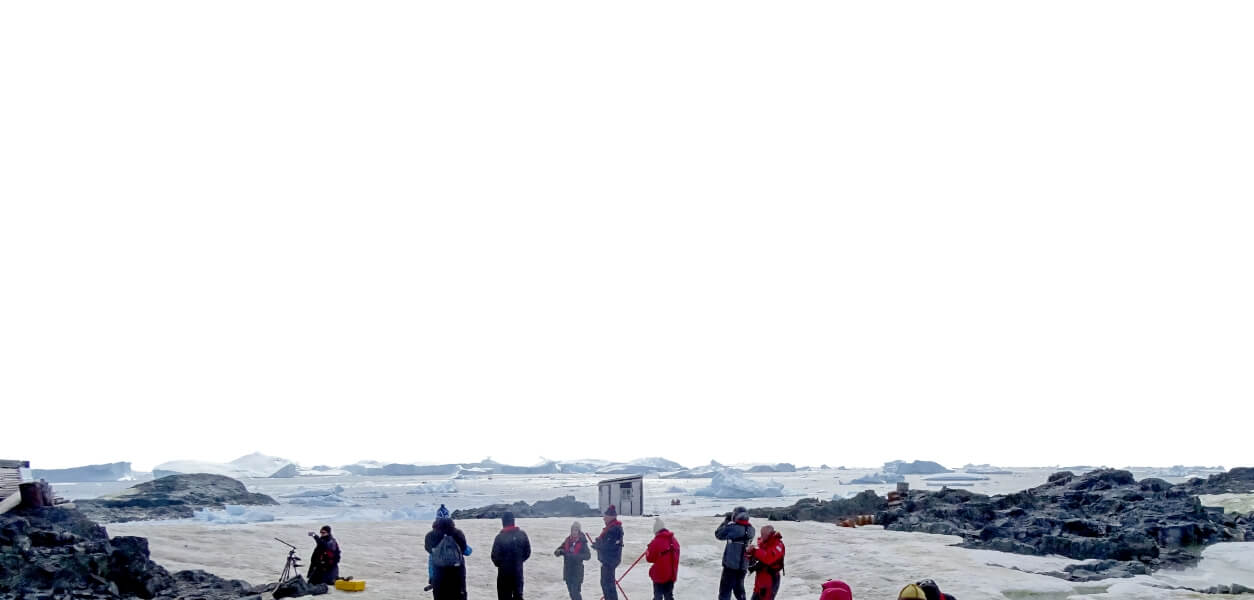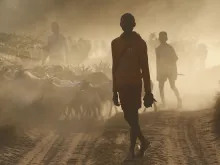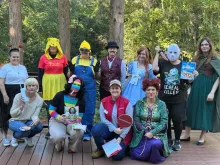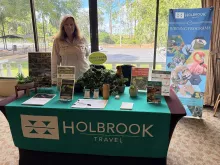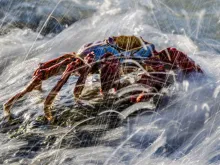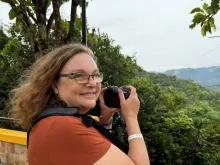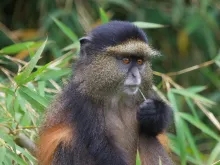It started with a gift from her father: a camera for graduation.
Karine Aigner had never planned to be a photographer. But after returning home from a year of traveling and teaching English overseas after college, one of the photos she had taken - a portrait of a grandmother and child - brought her friend’s mother to tears.
“It was that moment, actually, that I realized how powerful photography is, because you can actually bring something to someone that they've never, ever seen before, and you can affect the way they see, the way they feel, and the reaction they have,” she says.
The self-taught Aigner has since worked as a professional photographer, as well as a senior photo editor for the likes of National Geographic's Kids and Little Kids magazines. In two upcoming endeavors, she will share some of what she’s learned along the way.
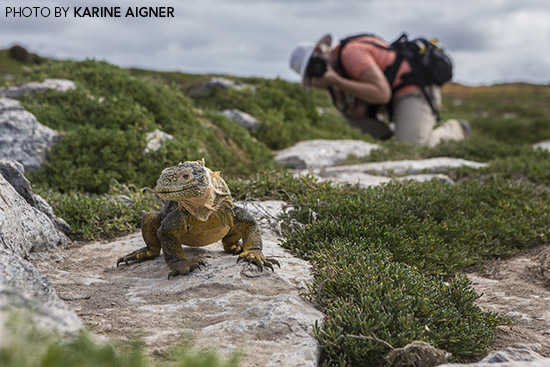 Aigner will speak March 2 during NANPA’s Nature Photography Summit in Jacksonville as part of their Lightning Talks series, and in July she will lead a Holbrook photography program to the Galapagos Islands.
At the NANPA Summit, her talk will focus on cell phone photography. “It’s something that people scoff at, but is actually quite creative and fun,” she says, pointing out that people looking at her photos often can’t distinguish which ones were taken with a phone.
Almost everyone carries a cell phone, and they're small, convenient, and discreet, making them a versatile tool in the quest to create compelling images. Plus, there are a multitude of apps available that let photographers control shutter speed, apply filters, or create square format or panorama photos. The main downside, she says, is the smaller file size, which is not always sufficient for commercial purposes.
Despite that, cell phone cameras allow professionals to share images quickly through social media outlets. “You can use it to build your own brand by being immediate with your photography,” she says.
Aigner will speak March 2 during NANPA’s Nature Photography Summit in Jacksonville as part of their Lightning Talks series, and in July she will lead a Holbrook photography program to the Galapagos Islands.
At the NANPA Summit, her talk will focus on cell phone photography. “It’s something that people scoff at, but is actually quite creative and fun,” she says, pointing out that people looking at her photos often can’t distinguish which ones were taken with a phone.
Almost everyone carries a cell phone, and they're small, convenient, and discreet, making them a versatile tool in the quest to create compelling images. Plus, there are a multitude of apps available that let photographers control shutter speed, apply filters, or create square format or panorama photos. The main downside, she says, is the smaller file size, which is not always sufficient for commercial purposes.
Despite that, cell phone cameras allow professionals to share images quickly through social media outlets. “You can use it to build your own brand by being immediate with your photography,” she says.
 Later this year, Aigner will lead a photography trip to the Galapagos, a place she first visited in 2012. She describes the archipelago as an “Alice in Wonderland” experience, where humans are the visitors and the animals are like characters in a fairy tale, unafraid and curious.
She hopes the trip leaves people with a rekindled appreciation for nature and wildlife and a greater awareness of what could be lost if it’s not protected.
Later this year, Aigner will lead a photography trip to the Galapagos, a place she first visited in 2012. She describes the archipelago as an “Alice in Wonderland” experience, where humans are the visitors and the animals are like characters in a fairy tale, unafraid and curious.
She hopes the trip leaves people with a rekindled appreciation for nature and wildlife and a greater awareness of what could be lost if it’s not protected.
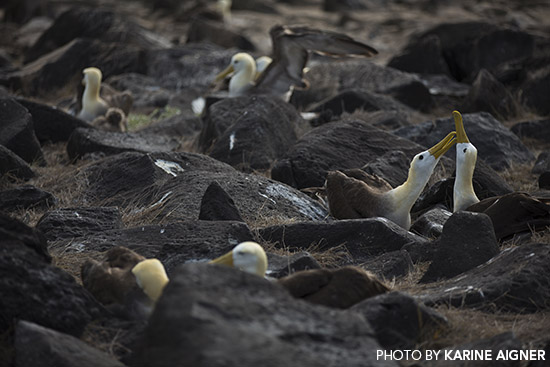 She also wants participants to walk away saying they learned something new about photography and about "making" pictures instead of taking them. “That always makes me feel good, and it renews your own artistic energy,” she says.
The group is open to all skill levels, and even to those who aren't necessarily interested in photography. With her experience as an editor, Aigner can offer one-on-one teaching and advice to anyone looking to take the next step in their craft and improve their own eye, whether they are beginners or more experienced photographers.
She also wants participants to walk away saying they learned something new about photography and about "making" pictures instead of taking them. “That always makes me feel good, and it renews your own artistic energy,” she says.
The group is open to all skill levels, and even to those who aren't necessarily interested in photography. With her experience as an editor, Aigner can offer one-on-one teaching and advice to anyone looking to take the next step in their craft and improve their own eye, whether they are beginners or more experienced photographers.
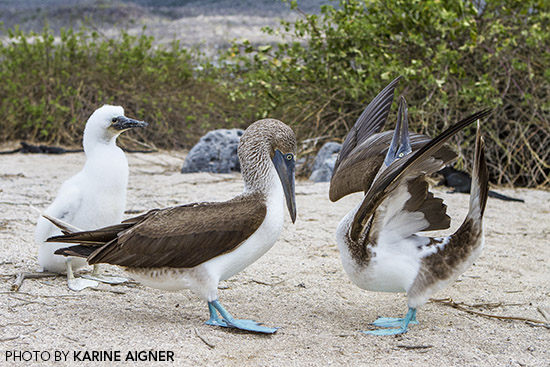 For photographers just starting out, Aigner's recommendation is to “shoot what you love.” If she were to do it over again, she says she might go back and take some technical classes. That said, she stresses that there are no rules. Or perhaps there are, “but if you follow them, you’re just another boring photographer who does what everybody else does."
There have been times when she’s wanted to walk away, because it was too hard, or she wasn't making enough money, or there was too much competition. It can be tough, she says, but she finds she can’t make it through a day without doing something photo-oriented. “Go into it because you love it, because you need it, because you can’t really live without it,” she says.
Interested in joining Karine Aigner in the Galapagos? For more information and a complete itinerary, visit our website.
For photographers just starting out, Aigner's recommendation is to “shoot what you love.” If she were to do it over again, she says she might go back and take some technical classes. That said, she stresses that there are no rules. Or perhaps there are, “but if you follow them, you’re just another boring photographer who does what everybody else does."
There have been times when she’s wanted to walk away, because it was too hard, or she wasn't making enough money, or there was too much competition. It can be tough, she says, but she finds she can’t make it through a day without doing something photo-oriented. “Go into it because you love it, because you need it, because you can’t really live without it,” she says.
Interested in joining Karine Aigner in the Galapagos? For more information and a complete itinerary, visit our website.
 Aigner will speak March 2 during NANPA’s Nature Photography Summit in Jacksonville as part of their Lightning Talks series, and in July she will lead a Holbrook photography program to the Galapagos Islands.
At the NANPA Summit, her talk will focus on cell phone photography. “It’s something that people scoff at, but is actually quite creative and fun,” she says, pointing out that people looking at her photos often can’t distinguish which ones were taken with a phone.
Almost everyone carries a cell phone, and they're small, convenient, and discreet, making them a versatile tool in the quest to create compelling images. Plus, there are a multitude of apps available that let photographers control shutter speed, apply filters, or create square format or panorama photos. The main downside, she says, is the smaller file size, which is not always sufficient for commercial purposes.
Despite that, cell phone cameras allow professionals to share images quickly through social media outlets. “You can use it to build your own brand by being immediate with your photography,” she says.
Aigner will speak March 2 during NANPA’s Nature Photography Summit in Jacksonville as part of their Lightning Talks series, and in July she will lead a Holbrook photography program to the Galapagos Islands.
At the NANPA Summit, her talk will focus on cell phone photography. “It’s something that people scoff at, but is actually quite creative and fun,” she says, pointing out that people looking at her photos often can’t distinguish which ones were taken with a phone.
Almost everyone carries a cell phone, and they're small, convenient, and discreet, making them a versatile tool in the quest to create compelling images. Plus, there are a multitude of apps available that let photographers control shutter speed, apply filters, or create square format or panorama photos. The main downside, she says, is the smaller file size, which is not always sufficient for commercial purposes.
Despite that, cell phone cameras allow professionals to share images quickly through social media outlets. “You can use it to build your own brand by being immediate with your photography,” she says.
 Later this year, Aigner will lead a photography trip to the Galapagos, a place she first visited in 2012. She describes the archipelago as an “Alice in Wonderland” experience, where humans are the visitors and the animals are like characters in a fairy tale, unafraid and curious.
She hopes the trip leaves people with a rekindled appreciation for nature and wildlife and a greater awareness of what could be lost if it’s not protected.
Later this year, Aigner will lead a photography trip to the Galapagos, a place she first visited in 2012. She describes the archipelago as an “Alice in Wonderland” experience, where humans are the visitors and the animals are like characters in a fairy tale, unafraid and curious.
She hopes the trip leaves people with a rekindled appreciation for nature and wildlife and a greater awareness of what could be lost if it’s not protected.
 She also wants participants to walk away saying they learned something new about photography and about "making" pictures instead of taking them. “That always makes me feel good, and it renews your own artistic energy,” she says.
The group is open to all skill levels, and even to those who aren't necessarily interested in photography. With her experience as an editor, Aigner can offer one-on-one teaching and advice to anyone looking to take the next step in their craft and improve their own eye, whether they are beginners or more experienced photographers.
She also wants participants to walk away saying they learned something new about photography and about "making" pictures instead of taking them. “That always makes me feel good, and it renews your own artistic energy,” she says.
The group is open to all skill levels, and even to those who aren't necessarily interested in photography. With her experience as an editor, Aigner can offer one-on-one teaching and advice to anyone looking to take the next step in their craft and improve their own eye, whether they are beginners or more experienced photographers.
 For photographers just starting out, Aigner's recommendation is to “shoot what you love.” If she were to do it over again, she says she might go back and take some technical classes. That said, she stresses that there are no rules. Or perhaps there are, “but if you follow them, you’re just another boring photographer who does what everybody else does."
There have been times when she’s wanted to walk away, because it was too hard, or she wasn't making enough money, or there was too much competition. It can be tough, she says, but she finds she can’t make it through a day without doing something photo-oriented. “Go into it because you love it, because you need it, because you can’t really live without it,” she says.
Interested in joining Karine Aigner in the Galapagos? For more information and a complete itinerary, visit our website.
For photographers just starting out, Aigner's recommendation is to “shoot what you love.” If she were to do it over again, she says she might go back and take some technical classes. That said, she stresses that there are no rules. Or perhaps there are, “but if you follow them, you’re just another boring photographer who does what everybody else does."
There have been times when she’s wanted to walk away, because it was too hard, or she wasn't making enough money, or there was too much competition. It can be tough, she says, but she finds she can’t make it through a day without doing something photo-oriented. “Go into it because you love it, because you need it, because you can’t really live without it,” she says.
Interested in joining Karine Aigner in the Galapagos? For more information and a complete itinerary, visit our website.



